Gravel guide to Girona – one of the best places in Europe for some off-road miles in spring
Tired of wet, muddy trails? Why not hop over to the gravel-riding mecca of Girona and check out the near-endless dusty trails and fantastic bike-friendly culture?
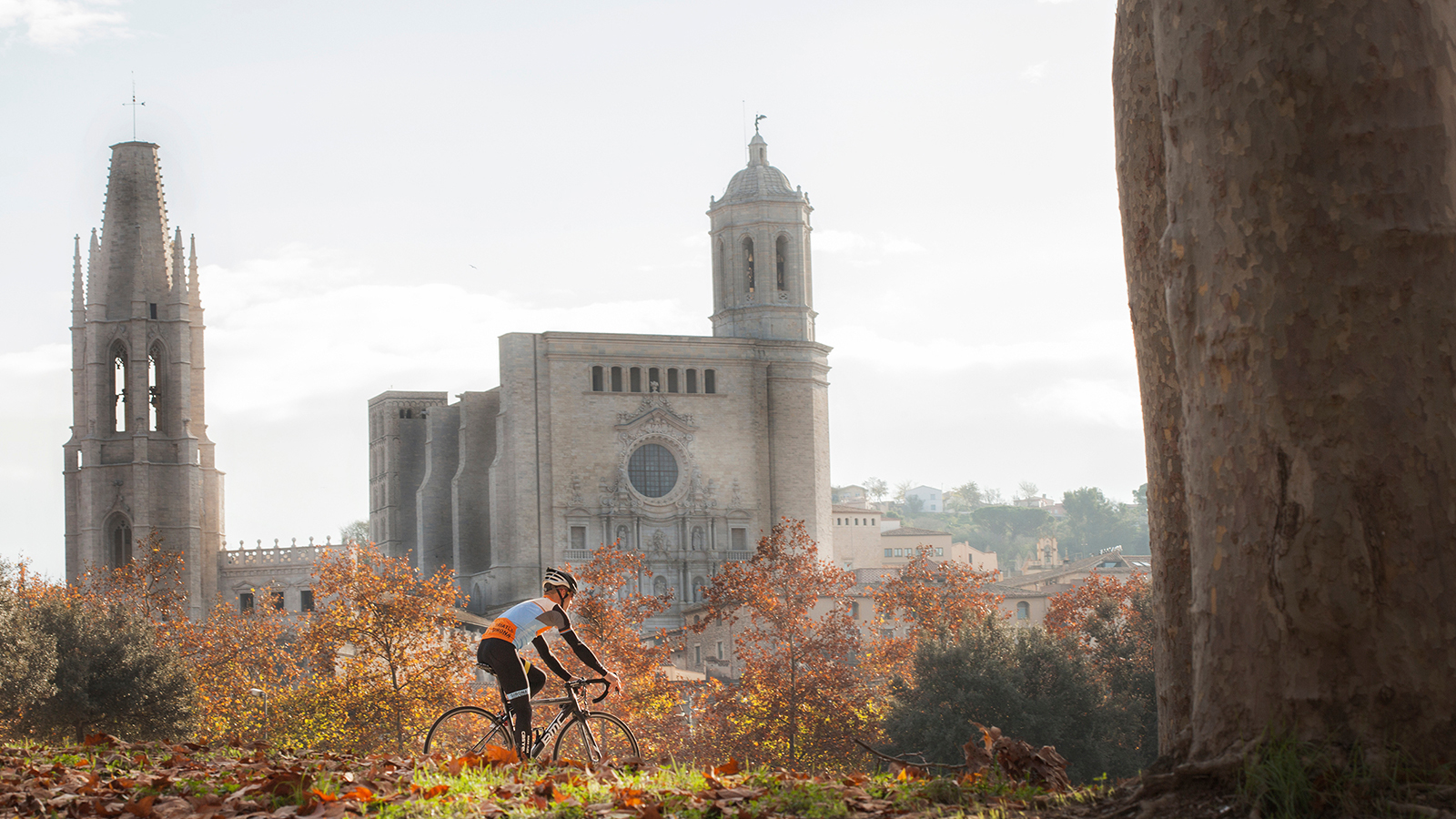
Girona, a picturesque city in Catalonia, Spain, has been a popular place for professional road cyclists for a while now with its quiet roads, proximity to the mountains and international airports, and charming medieval architecture. As with many Mediterranean countries, unpaved rural roads are just “a thing” – a very beautiful thing at that which has turned the area into a real gravel hotspot. There are farm tracks, hunting trails, and forestry roads crisscrossing the area, offering a vast range of routes and gradients to ride.
The off-season training camp has been a staple for road riders for a long time, and although it doesn't sound like it fits the spirit of gravel (whatever that is), in truth, for all but professional bike racers, it's just an excuse to ride your bike in the sunshine with your mates at a time of year when back home it's still dark for the majority of the day and your trails are underwater.
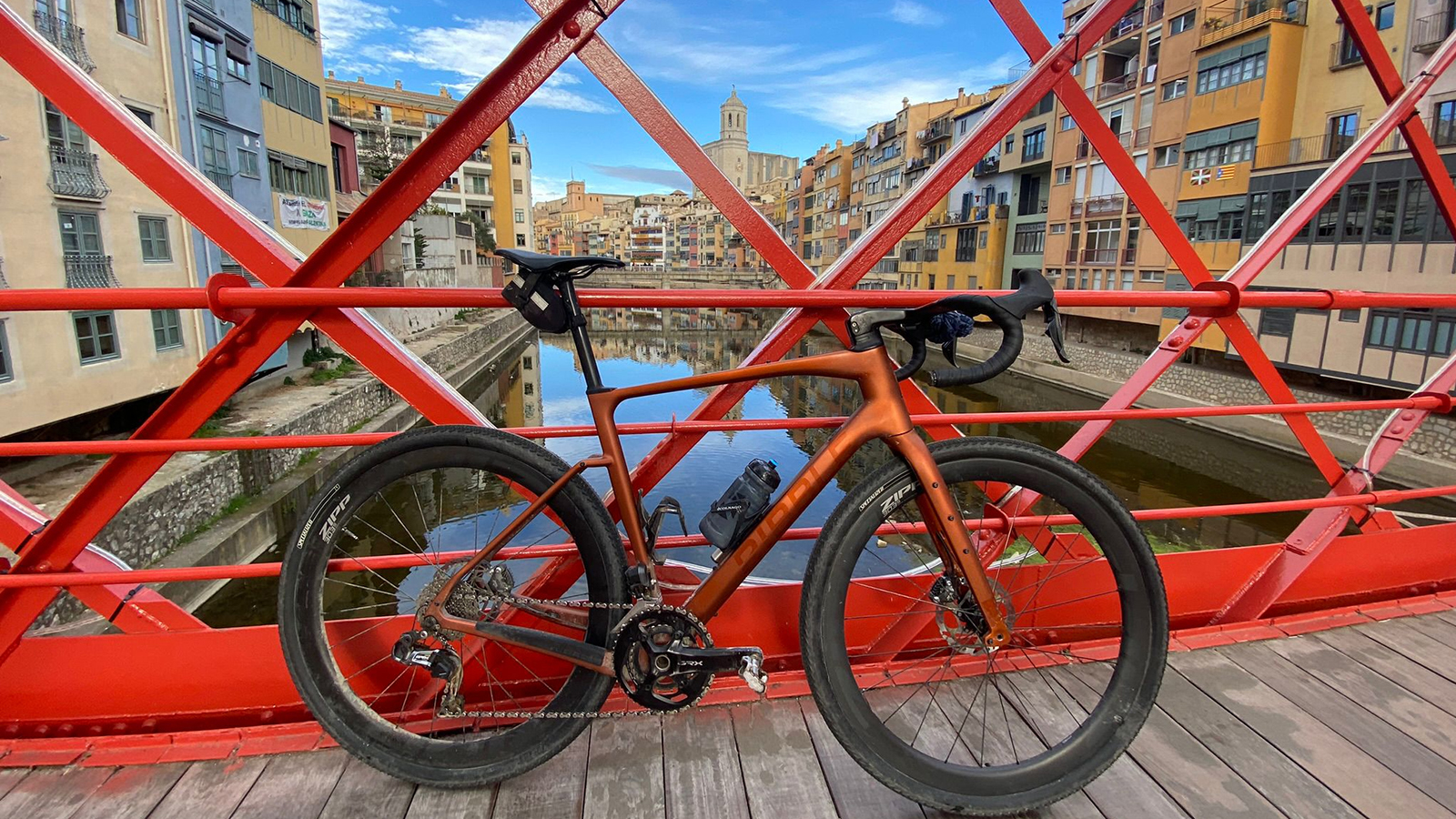
The riding
Girona's trails and dirt roads offer various terrain and riding surfaces, From 15-kilometer climbs to flat gravel roads, fire roads to sweeping singletrack there is something to suit everyone. The trails range from rocky and rooty to sandy, muddy, and most importantly largely dry. As with anywhere close to proper mountains, it rains occasionally, though this makes the riding even better by keeping the dust down and increasing grip levels.
The choice of possible routes is huge, but the Els Metges route is a real highlight with a good mix of terrain over 70km with a lunch stop at the Els Metges restaurant at the 28km point and a final cafe stop at Madremanya 41km in. It takes in the Gavarres forest and a great mix of wide gravel tracks, forest tracks, and even an old railway line with 800m of elevation gain. It's a testing but rewarding route that should take around four hours to complete, though how long you spend enjoying the Catalan hospitality is up to you.
If you're looking for a true classic, the Mieres loop could be just the ticket. It's only 10km further, but with over 1,600m of vertical gain, it is considerably tougher and takes over five hours to complete for most riders. The route takes in the imposing Rocacorba, which is well known in the road world as a tough climb that many pros use for training, but this route takes the more challenging gravel option instead of the smooth asphalt topping out at 753 meters above sea level. There's no fancy lunch stop on this route, though you can refill your bottles at a fountain or font at the church of Sant Esteve at the 27km, or you can have a pit stop in the village of Mieres en route.
Guided riding
If planning your routes and a bit of exploring sounds a bit daunting there are plenty of local bike shops, cafes, and holiday companies like eatsleepcycle or lafabricagirona offering guided rides and help with anything you may need. Local knowledge can make a massive difference to how your trip goes, whether that's helping to plan a route based on your abilities or fitness, the lowdown on the local trail conditions, or simply the best spots for a cafe stop.
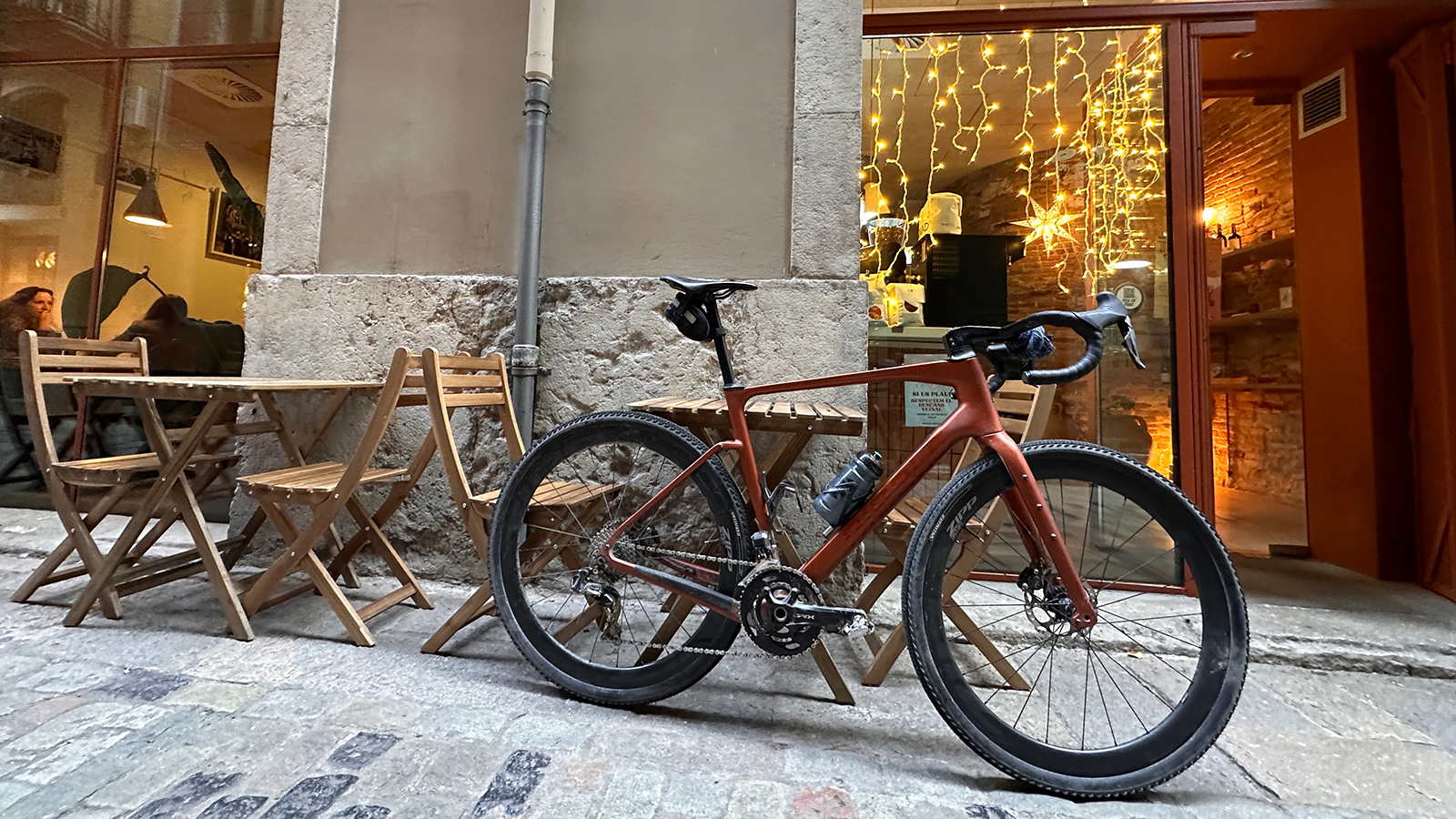
Making the most of your time
If you use your winter retreat as a training camp or just a chance to improve your fitness, then it's worth planning your time effectively. It is all too easy to get carried away on your first day, riding too far and fast, then spend the rest of your week tired and lacking the energy to make the most of the never-ending gravel trails.
Use your first day to build your bike, go for a short shakedown ride to check everything's working as it should, and ride into the old town to grab a coffee and check out your surroundings. Maybe even pop into a few of the local shops to find out what group rides are happening that week and what trails are running the best.
Leave your longest and hardest rides till a few days into your trip; your legs will be warmed up to longer distances, and you will have a much better time riding if you are not trying to recover from previous efforts. Also, pay attention to how you fuel your body and avoid calorie deficits. A week of riding is not the time to try and drop a few pounds. Instead, ensure you eat a suitable amount of carbohydrates during the day and try to include protein in your evening meals to help your muscles recover for the next day's ride.
Bike choice
A gravel bike is the ideal choice, with 700c wheels and at least 35mm, but preferably 40-45mm wide rubber, being the perfect all-rounder for exploring the area. You can choose a fast gravel bike like the Argon Dark Matter or the Ribble Gravel Ti Pro, or something more comfortable and adventure-based like the Cotic Cascade for multi-day, go-anywhere adventures.
The area is littered with steep climbs, so low gearing is advised. A 38-40t chainring and a wide-range cassette with at least 11-42, preferably up to 46 or 50, would be ideal. Sitting and spinning a low gear is a real benefit on loose gravel climbs, especially if you plan on riding consecutive days with tired legs.
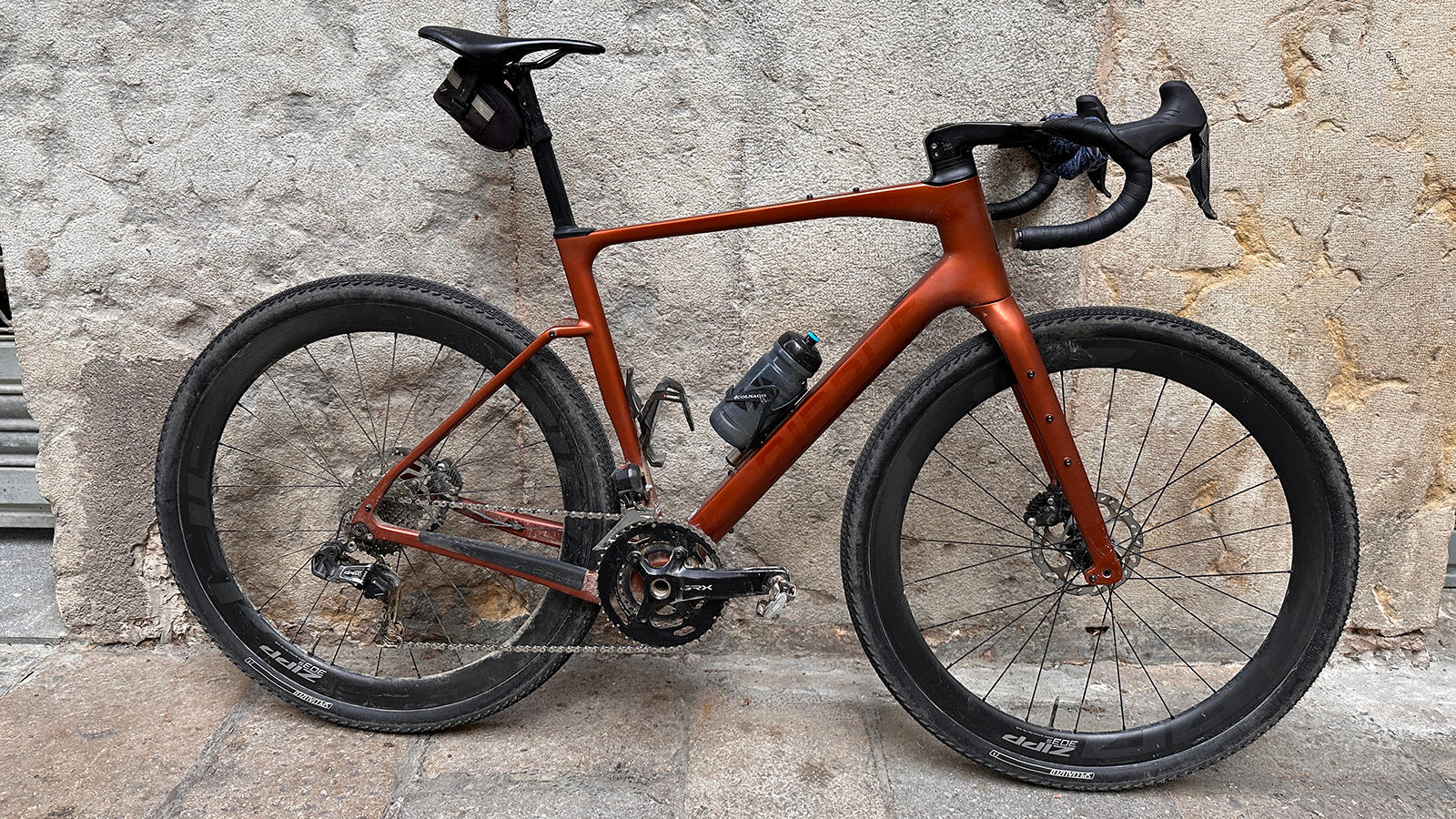
Kit essentials
Obviously, the kit you take with you depends on the kind of riding you plan to do, but as well as standard riding gear (jerseys, gloves, shoes, etc) we recommend the below so you're covered for all eventualities.
- XC or gravel helmet: A well-vented road or XC helmet is ideal
- Clothing: Comfortable gravel bib shorts and jersey with good wicking properties, as well as a packable waterproof and arm warmers
- Eyewear: Tinted, vented sunglasses are a necessity, and they also help to keep dust from your eyes
- Suncream: Sweat-resistant SPF50
- Nutrition: Try high-calorie bars and gels or some bocadillo from the many local bakeries. Energy products are great, but sometimes, regular food is hard to beat, so don't forget to plan in at least one cafe stop
- Repair and maintenance: A comprehensive multi-tool, tire plug kit, spare inner tubes, spare brake pads, and brake fluid. Remember your chamois cream too, it's a must-have on multi-day rides
Must-ride trails
Ribble Collective rider Joe Laverick has been a Girona resident for over three years now.
Like many, he was drawn here as a professional road cyclist but was soon lured to the world of gravel, no doubt helped by the buoyant local gravel riding scene. When I asked what his top choice for a route would be, he said, “To be honest, there are so many I tend not to have a favorite. Instead, I like to go explore and get lost, usually in the Gavarres area.”

Sleeping and eating
The local cuisine mixes Mediterranean and Catalan influences, with everything from local cake shops selling Xuixo pastries to fine dining at the world-renowned Michelin star El Celler de Can Roca restaurant.
The El Lleó marketplace in the city center is the ideal place to visit after a long day exploring the trails. With over 60 stalls selling a vast range of local produce, it is the perfect place to refuel.

Of course, the usual hotel chains in and around Girona offer accommodation, but there are also plenty of other more interesting options available. Those on a budget could check out the youth hostels and hostelries, or those looking for something a bit more relaxed might like some of the rural agritourism options. Check out Girona's tourist information site for all the options.
Off-the-bike activities
Girona will suit you well if you like good restaurants and enjoy European cafe culture. With its majestic old town, home to narrow streets, medieval architecture, and a range of museums and places to eat and drink, it is a worthy city break location on its own, regardless of the fantastic riding on offer.
Having been around for over 2,000 years, the town has plenty of history to explore. Whether you are checking out the Força Vella or the Medieval Quarter, there is lots to see. The old Jewish Quarter, or Call, is a particular highlight with its stunning streets, porticoed squares, exuberant Baroque spaces, and Noucentisme-style buildings designed by architect Rafael Masó.
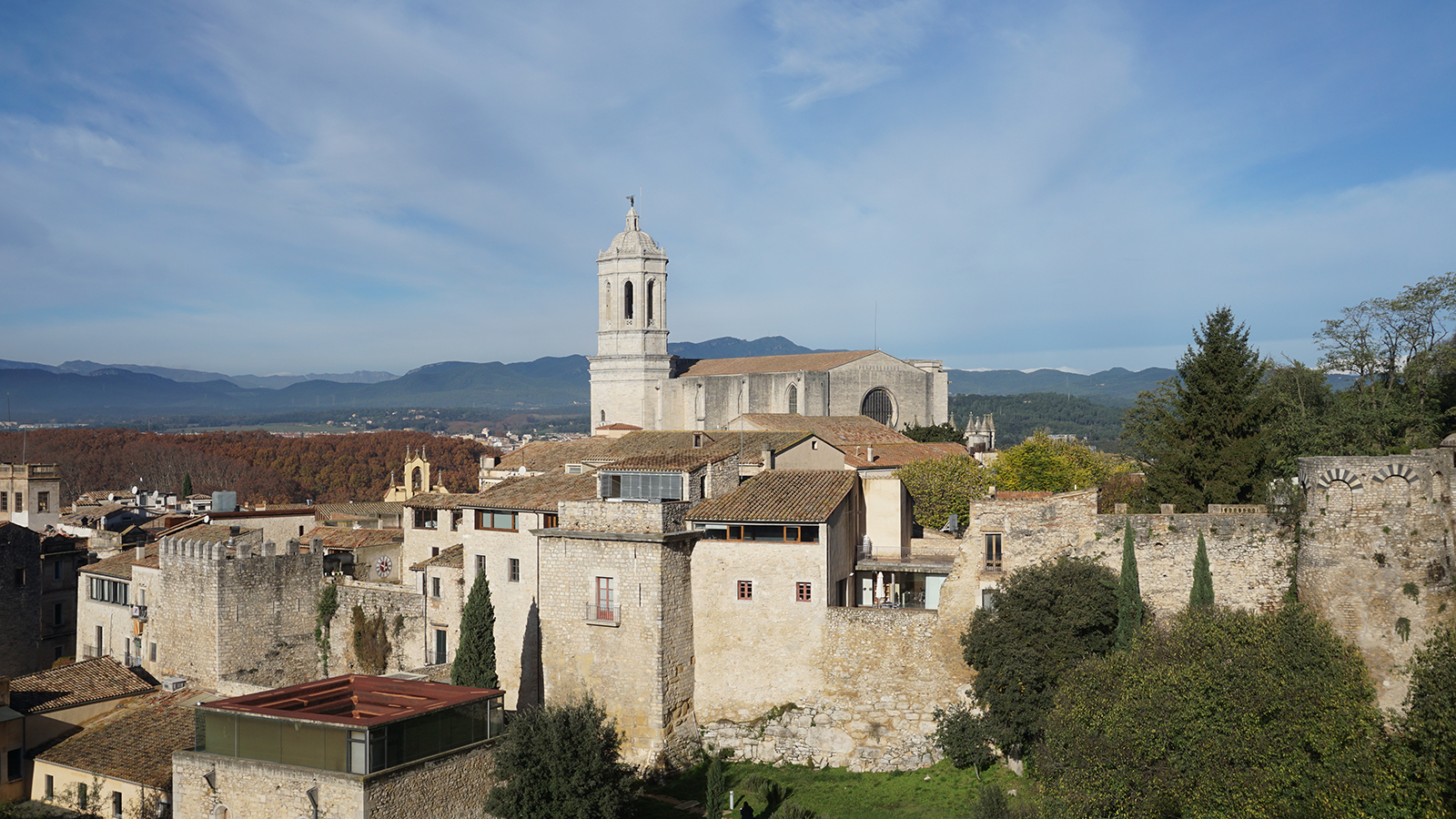
Weather conditions
Girona enjoys a Mediterranean climate, with mild winters and hot summers. During the winter months, temperatures typically range from 10°C to 15°C (50°F to 59°F), making it ideal for gravel riding without extreme cold or heat.
Getting there
One of the reasons Girona became such a hotspot for professional riders is its great transport connections. Girona-Costa Brava airport is close by, and the larger Barcelona-El Prat airport is an hour away, with 25 trains running from there to Girona each day. Both airports offer a vast range of flight options, and as they are both popular destinations, prices are relatively cheap, too.
Those of you already in mainland Europe can take advantage of Spain's great high-speed rail network and keep your carbon footprint low with fast trains running from Barcelona to Girona and connections across the continent from there.
For more information, check out Girona.cat.

Neal has been riding bikes of all persuasions for over 20 years and has had a go at racing most of them to a pretty average level across the board. From town center criteriums to the Megavalanche and pretty much everything in between. Neal has worked in the bicycle industry his entire working life, from starting out as a Saturday lad at the local bike shop to working for global brands in a variety of roles; he has built an in-depth knowledge and love of all things tech. Based in Sheffield, UK, he can be found riding the incredible local trails on a wide variety of bikes whenever he can
